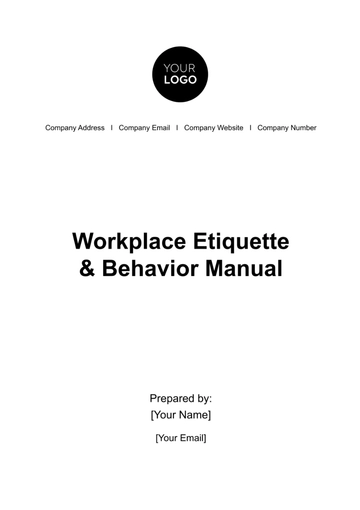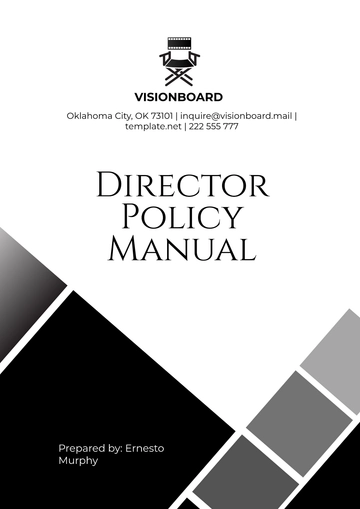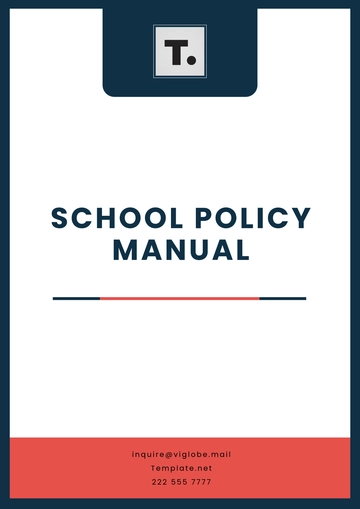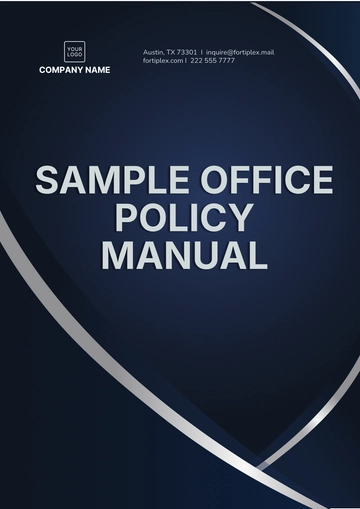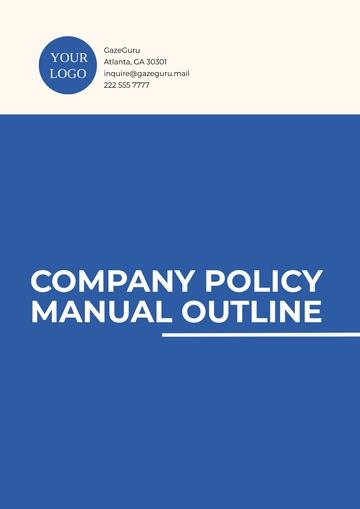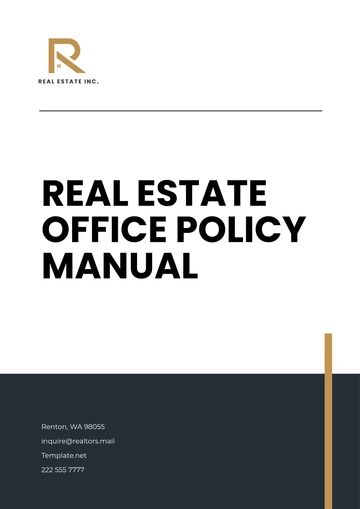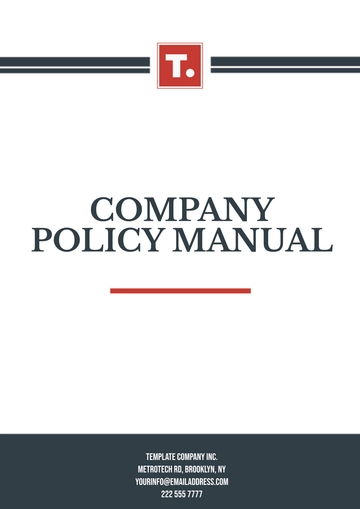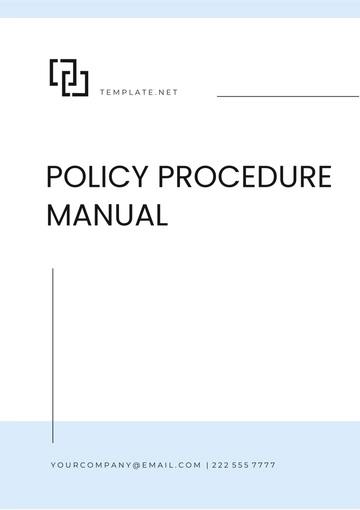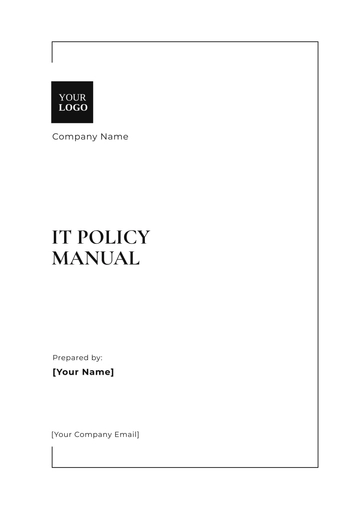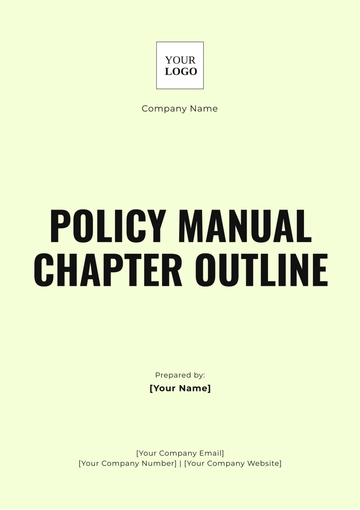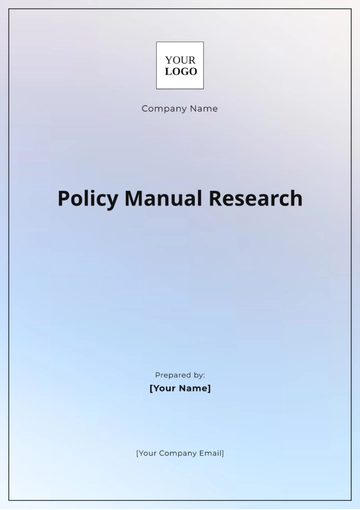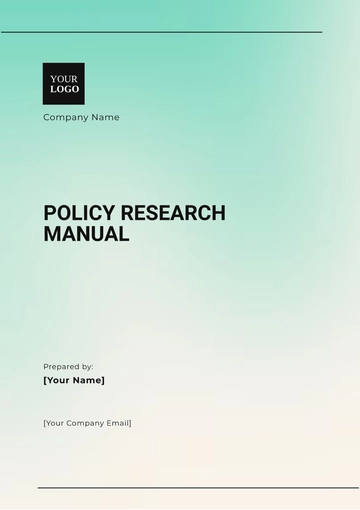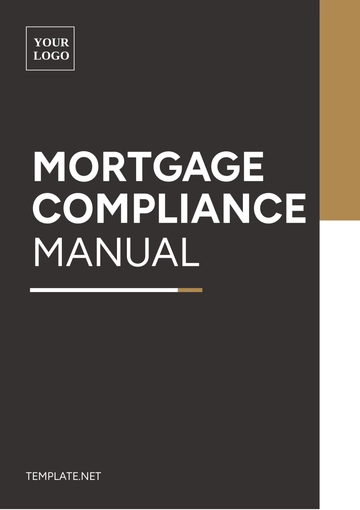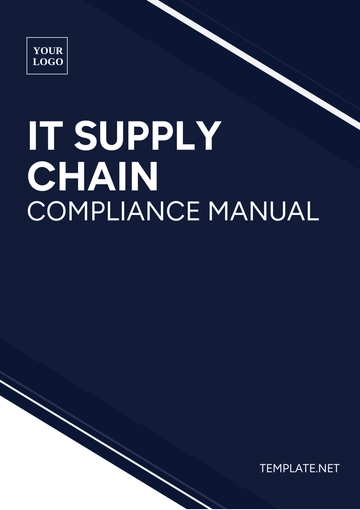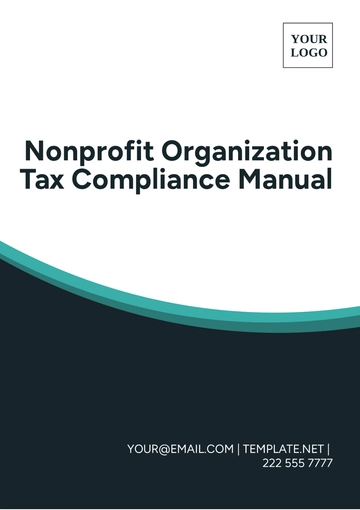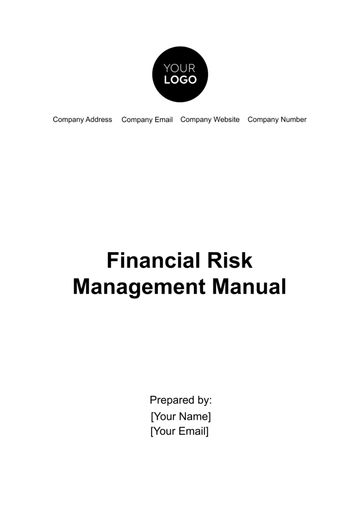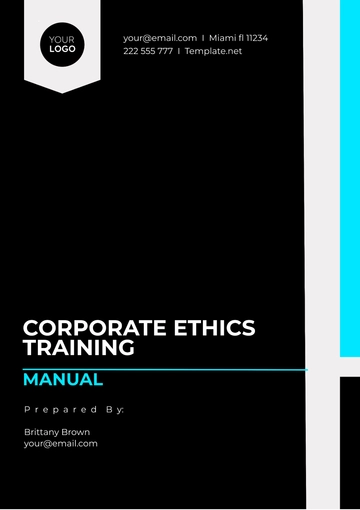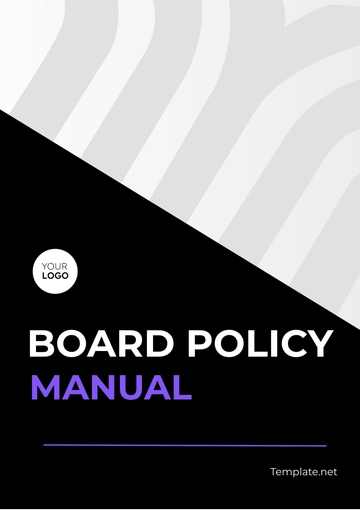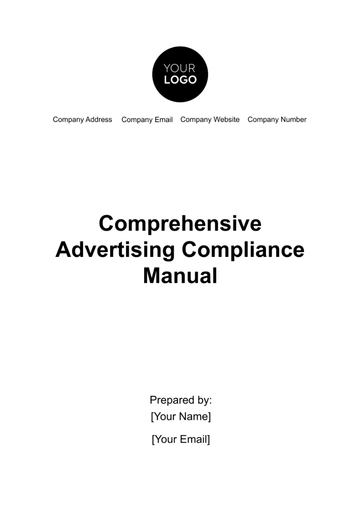Free Social Media Advertising Governance Manual
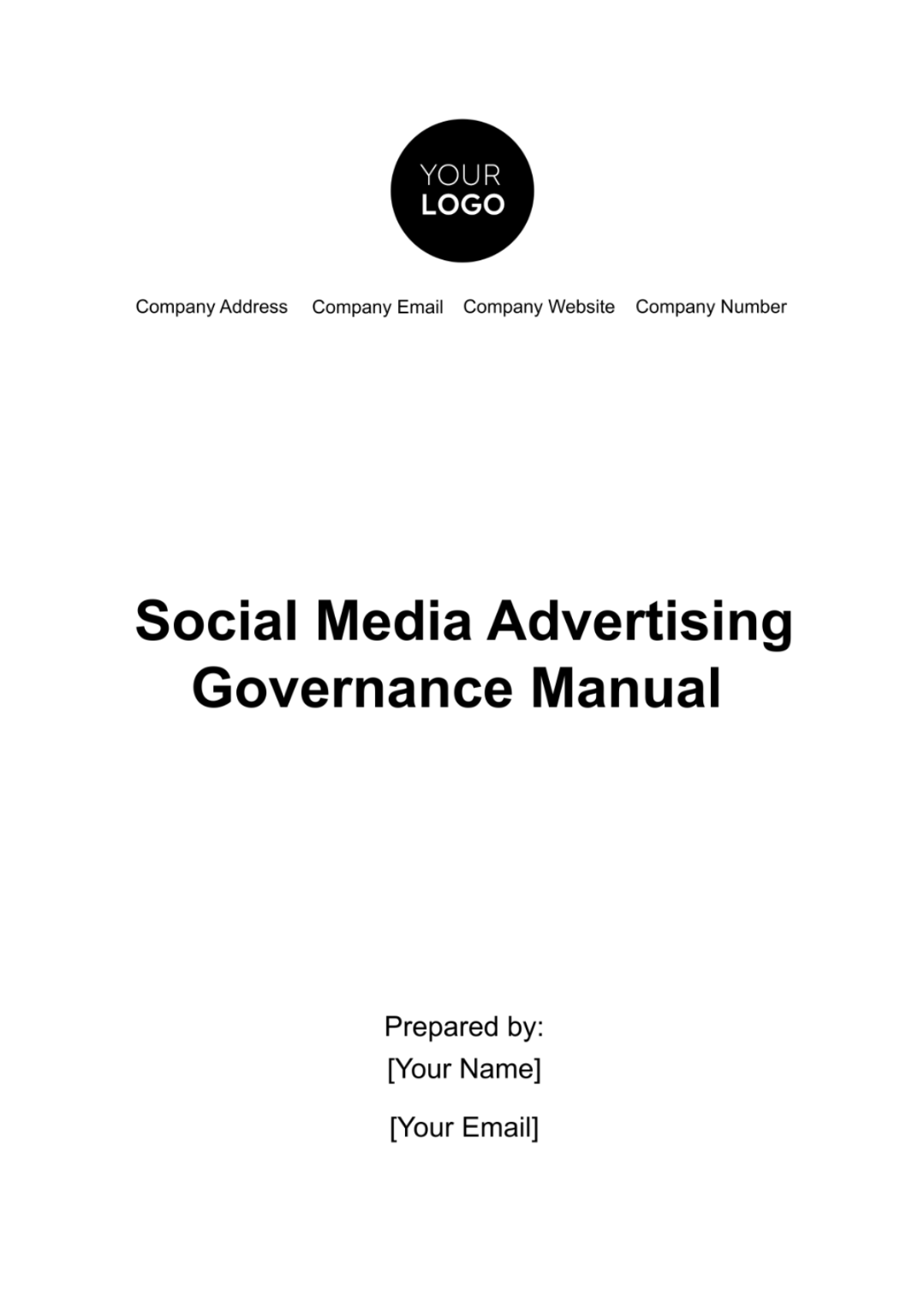
I. Introduction
A. Purpose And Scope
The Social Media Advertising Governance Manual serves as the foundational document that articulates the strategic framework and operational guidelines for the judicious and compliant utilization of social media advertising within our organization. This document is meticulously crafted to align with the organization's overarching objective of increasing brand visibility and engagement while maintaining strict adherence to legal and ethical standards. By delineating the parameters, standards, and best practices, this manual aims to provide a roadmap for orchestrating impactful and legally sound campaigns that resonate with our target audience.
B. Audience
This document is specifically tailored for a diverse audience engaged in the multifaceted landscape of social media advertising. It is essential reading for marketing professionals responsible for crafting and executing campaigns that embody our brand identity. Content creators will find valuable insights to ensure the creation of compelling content that aligns with brand guidelines. Compliance officers play a crucial role in guaranteeing that all advertising efforts conform to legal and regulatory requirements. Other stakeholders, including executives and decision-makers, will benefit from understanding the strategic considerations outlined herein. The insights provided are designed to empower these individuals with the knowledge and guidance required to execute campaigns that not only resonate with our brand ethos but also adhere scrupulously to regulatory mandates.
C. Document Revision History
In the dynamic realm of digital advertising, adaptability is paramount. This section provides a chronological record of revisions, ensuring transparency and accountability in the evolution of this manual. Each entry includes version details, revision dates, the name of the author effecting the change, and a concise description of the modifications made. Regular review and refinement of this document are integral to its efficacy in reflecting current industry trends, regulatory landscapes, and organizational strategies.
Version | Date | Author | Description |
1.0 | 2050-11-20 | Anne Smith | Initial Release - Establishing foundational guidelines for social media advertising. |
II. Roles And Responsibilities
A. Marketing Team
The Marketing Team plays a pivotal role in the success of our social media advertising initiatives. Their responsibilities encompass strategic planning, target audience analysis, and campaign execution. Specifically:
B. Strategic Planning
Objective Alignment: Align advertising strategies with organizational goals and marketing objectives.
Target Audience Analysis: Conduct thorough analyses to identify and understand target audiences, ensuring precise targeting for each campaign.
Campaign Ideation: Generate innovative and compelling ideas that resonate with the target demographic.
C. Campaign Execution
Content Development: Oversee the creation of engaging and on-brand content for social media platforms.
Ad Placement: Strategically place advertisements across relevant social media channels to maximize reach.
Budget Management: Efficiently allocate budgets to campaigns, ensuring optimal resource utilization.
D. Content Creators
Content Creators are the architects of our social media presence, responsible for crafting captivating and brand-consistent content that resonates with our audience.
1. Creative Development
Content Ideation: Generate creative concepts in alignment with campaign objectives and brand guidelines.
Visual Design: Create visually appealing graphics, images, and videos that convey key messages effectively.
Copywriting: Develop compelling and concise copy that complements visual elements.
2. Brand Consistency
Brand Messaging: Ensure that all content aligns with the established brand messaging and values.
Consistent Tone: Maintain a consistent tone and voice across different content types and platforms.
Adherence To Guidelines: Adhere to content standards and guidelines outlined in the Brand Guidelines section.
3. Collaboration
Cross-Functional Collaboration: Collaborate with the Marketing Team, Legal Team, and Compliance Officers to ensure all content meets regulatory requirements.
Feedback Incorporation: Actively seek and incorporate feedback from relevant stakeholders for continuous improvement.
III. Legal And Regulatory Compliance
In the realm of social media advertising, adherence to legal and regulatory frameworks is paramount. This section provides a concise overview of the key considerations to ensure compliance.
A. Data Protection Regulations
To safeguard user privacy and uphold data integrity, campaigns must align with prevailing data protection regulations. Rigorous measures will be implemented to secure and responsibly handle user information.
B. Consumer Protection Laws
Ensuring fair and transparent practices, campaigns will comply with consumer protection laws. This includes accurate representation of products or services and avoidance of deceptive advertising strategies.
C. Other Applicable Regulations
Beyond data protection and consumer protection, campaigns will adhere to any other relevant regulations. A proactive approach to staying informed and adapting to evolving legal landscapes is integral to maintaining compliance.
IV. Brand Guidelines
A. Brand Messaging
Maintain a consistent and compelling brand message across all social media advertising platforms. Ensure that the language used aligns with the organization's values, tone, and mission. Emphasize clarity and authenticity to resonate with the target audience.
B. Imagery Guidelines
Define clear standards for visual elements, including images and graphics used in social media advertising. Ensure that visuals align with the brand's visual identity, adhere to copyright laws, and resonate with the intended audience. Strive for a cohesive and visually appealing brand representation.
C. Brand Representation Across Platforms
Establish guidelines for adapting the brand's representation to suit the unique features and demographics of each social media platform. Maintain a unified brand presence while tailoring content to the specific characteristics and expectations of each platform. Consistency in brand representation fosters brand recognition and trust among the audience.
V. Campaign Approval Process
The Campaign Approval Process is a meticulous framework designed to ensure the seamless and compliant execution of social media advertising initiatives. This process involves multiple stages to guarantee that campaigns align with organizational standards, legal requirements, and brand guidelines.
A. Pre-Approval Steps
Prior to formal submission, the marketing team conducts a thorough review of proposed campaigns. This includes assessing the campaign's strategic alignment, target audience relevance, and adherence to overarching marketing objectives.
B. Review By Legal Team
The proposed campaign undergoes a comprehensive legal review to confirm compliance with data protection regulations, consumer protection laws, and any other applicable legal frameworks. The legal team ensures that the campaign content and strategies meet the required legal standards.
C. Compliance Check
Following the legal review, the campaign undergoes a compliance check to ensure alignment with internal policies and procedures. This step includes verifying that the campaign adheres to the guidelines outlined in this governance manual and any additional internal compliance standards.
D. Marketing Team Approval
Upon successful completion of the pre-approval steps, the campaign is presented to the marketing team for final approval. This stage involves a collective assessment of the campaign's creativity, effectiveness, and potential impact on the target audience. Approval at this stage signifies the green light for the campaign's implementation.
E. Campaign Approval Process Overview Table
Stage | Responsible Team | Key Activities | Documentation Required |
Pre-Approval Steps | Marketing Team | Strategic review, target audience assessment, alignment with marketing objectives | Campaign Proposal |
This table provides a succinct overview of the Campaign Approval Process, detailing each stage's responsible team, key activities, and required documentation. This structured approach ensures a comprehensive evaluation, minimizing the risk of non-compliance and optimizing the effectiveness of social media advertising campaigns.
VI. Content Standards
A. Language Usage
Maintain a consistent and professional tone across all social media advertising content. Adhere to the organization's language guidelines, ensuring clarity and alignment with brand messaging.
B. Image Guidelines
Follow specified image guidelines to convey a cohesive visual identity. Images should be high-quality, relevant, and culturally sensitive. Avoid the use of copyrighted material without proper authorization.
C. Content Restrictions
Specify prohibited content types, including but not limited to offensive language, discriminatory imagery, and controversial themes. Ensure compliance with legal and ethical standards in all social media advertising materials.
VII. Budgeting And Resource Allocation
Efficient budgeting and resource allocation are paramount to the success of social media advertising campaigns. This section provides a succinct overview of the guidelines and procedures governing the financial aspects of campaign execution.
A. Budgeting Guidelines
1. Budget Definition
Define the overall budget for social media advertising campaigns, encompassing both paid promotions and associated costs.
2. Allocation By Platform
Specify budget allocation across various social media platforms based on the campaign's target audience and strategic objectives.
3. Campaign-Specific Budgets
Implement a strategy for establishing campaign-specific budgets, ensuring optimal resource utilization for each initiative.
B. Resource Allocation For Campaigns
1. Human Resources
Outline the allocation of human resources, including team members responsible for campaign management, content creation, and analytics.
2. Technology And Tools
Detail the allocation of necessary technologies and tools to support the execution and monitoring of social media advertising efforts.
3. Ad Spend Distribution
Utilize the following table to illustrate the distribution of ad spend across different social media platforms:
Platform | Ad Spend Allocation (%) | Justification |
40% | Largest user base and robust targeting capabilities. | |
C. Contingency Fund
Establish a contingency fund equal to [00]% of the overall budget to address unforeseen expenses or capitalize on emerging opportunities.
VIII. Monitoring And Reporting
A. Key Performance Indicators (KPIs)
Establish clear Key Performance Indicators (KPIs) to measure the success of social media advertising campaigns. Identify and prioritize metrics such as engagement rates, click-through rates, conversion rates, and audience demographics.
B. Metrics For Performance Evaluation
Define the specific metrics that will be used to evaluate the performance of each social media advertising campaign. This includes but is not limited to impressions, reach, lead generation, and return on investment (ROI).
C. Reporting Procedures
Outline the procedures for generating regular reports on social media advertising campaign performance. Specify the frequency, format, and distribution channels for these reports. Ensure that reports provide actionable insights for continuous improvement.
D. Key Considerations
Utilize analytics tools to gather and analyze data effectively.
Ensure that reports align with organizational goals and objectives.
Foster a culture of data-driven decision-making within the marketing team.
IX. Crisis Management
A. Crisis Communication Plan
In the event of a crisis, the organization has a structured Crisis Communication Plan in place. This plan outlines the step-by-step procedures for responding to unexpected issues or negative feedback arising from social media advertising campaigns.
B. Escalation Procedures
To ensure swift and effective resolution, a clear Escalation Procedure is established. This defines the hierarchy of authorities and the channels through which critical issues are escalated for timely attention and resolution.
C. Post-Crisis Evaluation
Following the resolution of a crisis, a Post-Crisis Evaluation is conducted to assess the effectiveness of the response and identify areas for improvement. This evaluation is crucial for continuous refinement of our crisis management strategies and maintaining resilience in the face of unforeseen challenges.
X. Training And Awareness
The Training and Awareness section aims to ensure a well-informed workforce engaged in social media advertising activities. This program provides a comprehensive understanding of the guidelines and best practices outlined in this manual.
A. Training Modules
The training comprises interactive modules covering:
Policy Overview: An in-depth exploration of the Social Media Advertising Governance Manual, emphasizing its significance in maintaining compliance and achieving campaign objectives.
Legal And Regulatory Compliance: Focuses on key legal aspects, such as data protection regulations and consumer protection laws, to equip participants with an understanding of the legal landscape.
Brand Consistency: Highlights the importance of maintaining a consistent brand image across various social media platforms, encompassing messaging, imagery, and overall representation.
B. Periodic Refresher Courses
To ensure ongoing awareness and adherence, periodic refresher courses are conducted. These sessions revisit critical aspects of the training, provide updates on any modifications to guidelines, and address emerging trends or regulatory changes in the dynamic landscape of social media advertising.
XI. Review And Updates
A. Review Schedule
Regular reviews of the Social Media Advertising Governance Manual are scheduled to ensure its ongoing relevance and alignment with industry trends, technologies, and regulatory changes. The review process involves a collaborative effort from key stakeholders, including the marketing team, legal experts, and compliance officers.
B. Update Procedures
Upon completion of the review, identified updates and revisions are implemented with meticulous attention to detail. The update procedures encompass a systematic approach, including version control, clear documentation of changes, and validation of the revised content against the latest legal and regulatory requirements.
C. Document Distribution
The updated manual is promptly distributed to all relevant parties through a secure and organized distribution system. This ensures that the latest guidelines and protocols are readily accessible to those involved in social media advertising activities.
- 100% Customizable, free editor
- Access 1 Million+ Templates, photo’s & graphics
- Download or share as a template
- Click and replace photos, graphics, text, backgrounds
- Resize, crop, AI write & more
- Access advanced editor
Discover the Social Media Advertising Governance Manual Template on Template.net, designed to streamline your ad operations. Editable and customizable, this manual ensures adherence to policies and standards across campaigns. Utilize our Ai Editor Tool to tailor guidelines, ensuring consistent messaging and compliance across all social media advertising endeavors.


